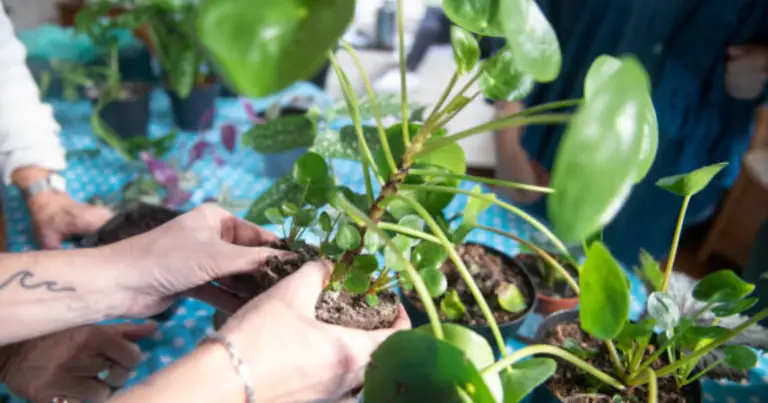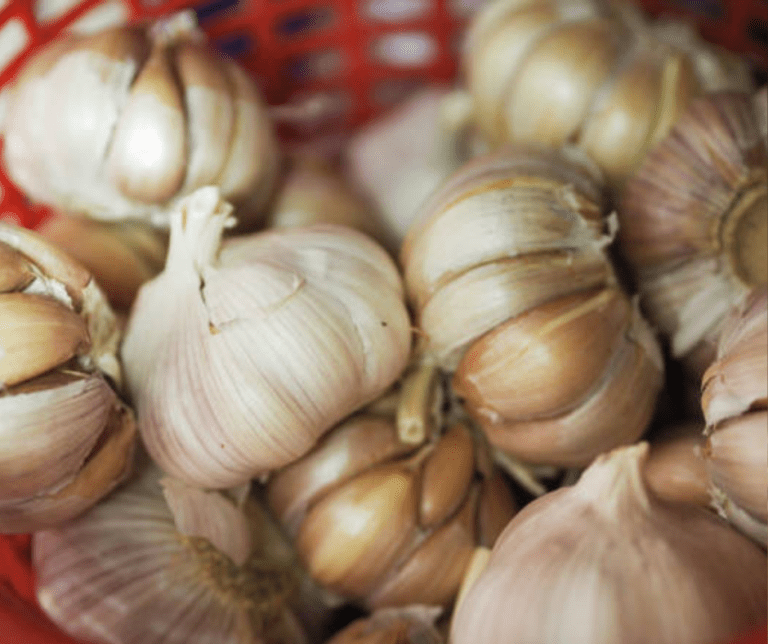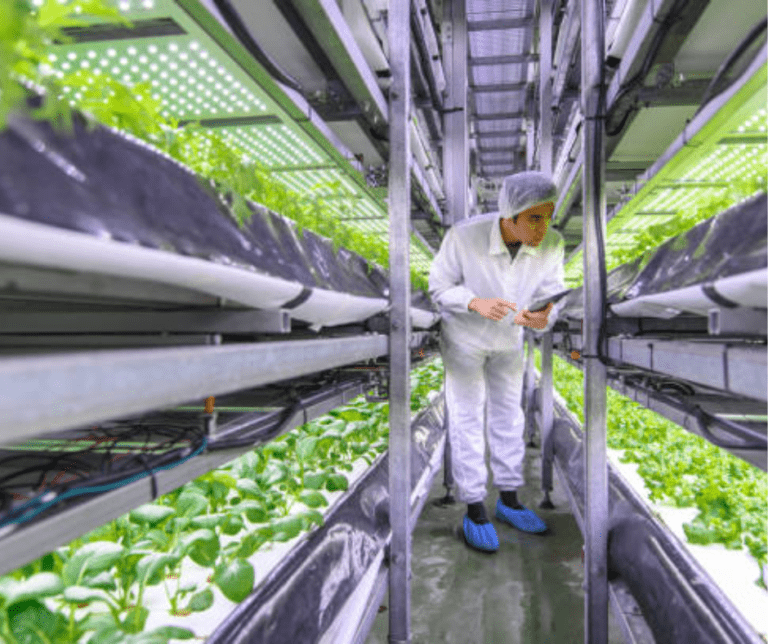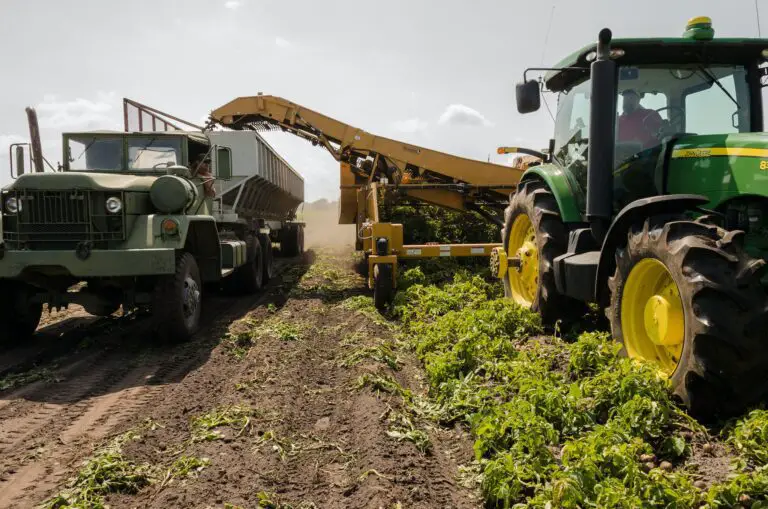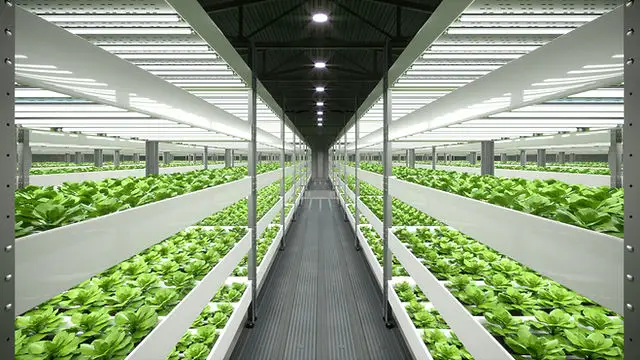How to Boost and Fine-Tune Your CO2 Levels for Your Plants: The Ultimate Grow Room CO2 Calculator
Table of Contents
Understanding the Importance of CO2 Levels for Plant Growth
To understand the importance of CO2 levels for plant growth, it is essential to delve into the science behind photosynthesis. Photosynthesis is the process where plants convert sunlight, water, and carbon dioxide into glucose and oxygen. This intricate biochemical process relies heavily on the availability of CO2 in the environment.
Carbon dioxide, a colorless and odorless gas, acts as a raw material for plants during photosynthesis. It enters the tiny pores on their leaves, known as stomata, and facilitates the production of glucose – the plant’s primary source of energy. Without an adequate supply of CO2, plants are unable to efficiently carry out photosynthesis, resulting in stunted growth and decreased productivity.

Research has shown that increasing CO2 levels in the atmosphere can have a positive impact on plant growth. As CO2 concentrations rise, plants are thought to exhibit enhanced photosynthetic rates and increased water-use efficiency. This phenomenon, referred to as CO2 fertilization, has been observed in various crop species and can lead to higher yields. However, it is crucial to strike a balance when considering CO2 enrichment, as excessively high levels can be detrimental to certain plants and ecosystems. Understanding the optimal CO2 levels for different types of plants is vital for gardeners and cultivators to maximize their yields while avoiding potential negative effects.
The Science Behind CO2 and Photosynthesis
Photosynthesis is an essential process for plant growth, and carbon dioxide (CO2) plays a crucial role in this intricate relationship. Through photosynthesis, plants convert sunlight, water, and CO2 into energy-rich carbohydrates, releasing oxygen as a byproduct. This process occurs in specialized structures within plant cells called chloroplasts, where the pigment chlorophyll absorbs light energy.
During photosynthesis, CO2 enters the plant through tiny openings on the leaves called stomata. It diffuses into the chloroplasts, specifically into an enzyme called Rubisco, which catalyzes a series of biochemical reactions. These reactions transform CO2 molecules into organic compounds, mainly glucose, that the plant utilizes for energy and growth. In simple terms, CO2 acts as a raw material for photosynthesis, driving the production of sugars that fuel various cellular processes.

Research has shown that elevated CO2 levels significantly enhance photosynthetic rates, leading to increased plant growth and productivity. However, the optimal concentration of CO2 varies depending on the plant species, environmental conditions, and growth stage. It is crucial for gardeners and growers to understand these factors to effectively regulate CO2 levels in their cultivation environments and optimize plant performance.
Identifying Signs of CO2 Deficiency in Plants
Plants require a sufficient amount of carbon dioxide (CO2) for photosynthesis, a vital process for their growth and development. However, identifying signs of CO2 deficiency in plants is crucial to ensure their health and productivity. When CO2 is limited, plants may exhibit certain symptoms that indicate their struggle to obtain an adequate supply of this essential gas.
One of the most common signs of CO2 deficiency is stunted growth. In the absence of sufficient carbon dioxide, plants may fail to reach their full potential, resulting in smaller leaves, stems, and overall size. Additionally, the leaves of CO2-deficient plants may appear pale or yellowish. This discoloration occurs because the lack of CO2 hampers the plants’ ability to produce chlorophyll, the pigment responsible for the green color in leaves. Consequently, the reduced chlorophyll production leads to a less vibrant and healthy appearance. As the deficiency progresses, leaves may even start to wither and drop prematurely, indicating severe impairment in the plant’s ability to photosynthesize.
Observing these signs of CO2 deficiency is pivotal for gardeners and plant enthusiasts alike. By identifying and addressing CO2 deficiencies in a timely manner, individuals can take necessary steps to rectify the situation and ensure the wellbeing of their plants. Stay tuned for our upcoming article, “Selecting the Right CO2 Enrichment Method for Your Grow Room,” where we will explore different strategies to enhance CO2 levels and promote optimal plant growth.
CO2 deficiency in plants is a rare condition, as most plants can obtain enough carbon dioxide from the air. However, some factors such as low light, high temperature, or high humidity can reduce the availability of CO2 for plants. CO2 deficiency can affect plant growth, photosynthesis, and respiration.
Here is a table summarizing some of the signs of CO2 deficiency in plants:
| Sign | Description | Example |
| Reduced growth rate | Plants grow slower and smaller than normal | Lettuce |
| Reduced water uptake | Plants take up less water or nutrient solution than normal | Hydroponic plants |
| Reduced transpiration | Plants lose less water through their leaves, which can affect their cooling and nutrient transport | Tomatoes |
| Reduced stomatal opening | Plants open their pores (stomata) less frequently or less widely, which can affect their gas exchange and photosynthesis | Cacti |
| Reduced leaf size | Plants produce smaller leaves than normal, which can reduce their photosynthetic area | Orchids |
| Reduced flowering and fruiting | Plants produce fewer or smaller flowers and fruits than normal, which can affect their reproduction and yield | Strawberries |
Selecting the Right CO2 Enrichment Method for Your Grow Room
Selecting the right CO2 enrichment method for your grow room is crucial in ensuring optimal plant growth and development. With a variety of options available, it is important to consider factors such as cost, efficiency, and ease of implementation.
One popular method of CO2 enrichment is through the use of carbon dioxide generators. These generators produce CO2 by burning natural gas or propane, and can be easily controlled to maintain consistent levels. They are a cost-effective option for larger grow rooms, as they can supply high volumes of CO2. However, it is important to properly size the generator based on the room’s dimensions and ventilation system to avoid the risk of excessive CO2 buildup.
Another option to consider is the use of compressed CO2 tanks or bottles. These tanks contain CO2 in a liquid form, which can be released into the grow room as needed. This method is ideal for smaller grow rooms, as it provides a controlled and easy-to-manage CO2 supply. However, it is important to monitor the tank’s pressure and ensure regular refills to maintain consistent CO2 levels.
When selecting the right CO2 enrichment method, it is also worth considering natural supplements such as fermenting organic matter or using CO2 bags. These methods provide a more sustainable and environmentally-friendly approach, but may require more frequent monitoring and maintenance to achieve optimal CO2 levels.
Ultimately, the choice of CO2 enrichment method should be based on factors such as the size of the grow room, budget constraints, and personal preferences. By carefully considering these factors, you can ensure that your plants receive the necessary CO2 levels for healthy and vigorous growth. As always, it is recommended to consult with experts or reputable sources to determine the best method for your specific growing circumstances.
Factors to Consider When Determining CO2 Levels for Your Plants
Determining the appropriate CO2 levels for your plants is crucial for their growth and overall health. There are several factors that you need to consider in order to ensure the optimal CO2 levels in your grow room or garden.
The first factor to take into account is the type of plants you are growing. Different plants have varying CO2 requirements. For instance, fast-growing plants such as tomatoes and lettuce typically benefit from higher CO2 levels, while slower-growing plants like herbs and flowers may require lower levels. Understanding the specific needs of your plants will help you create an ideal CO2 environment for them.
Another important factor to consider is the size of your growing space. Smaller grow rooms or gardens may require less CO2 supplementation compared to larger spaces. Ensuring a balanced CO2 distribution within your space is crucial, as plants in different areas may be exposed to varying levels of CO2. Proper ventilation and air circulation systems can help maintain a consistent CO2 concentration throughout the entire space.
Additionally, it is important to keep in mind the stage of growth your plants are in. During the vegetative stage, plants generally require higher levels of CO2 to support active growth and photosynthesis. As they transition into the flowering or fruiting stage, their CO2 requirements may decrease. Adjusting the CO2 levels accordingly can optimize plant development at different growth stages.
By considering factors such as plant type, space size, and growth stage, you can determine the most suitable CO2 levels for your plants. Ensuring the right CO2 environment will not only promote healthy growth but also maximize yield and overall plant quality. In the following sections, we will delve deeper into the techniques and methods that can be implemented to achieve these desired CO2 levels.
There are several factors that affect the optimal CO2 levels for your plants, such as the type of plant, the light intensity, the temperature, the humidity, and the pest and disease risk.
Below is a table that shows Some of the factors to consider when determining CO2 levels for your plants in your growing room are:
| Factor | Description |
| Room size | The size of your growing room affects the amount of CO2 you need to supplement and the method you use to deliver it. Larger rooms may require more CO2 sources or a more efficient distribution system. |
| Air exchange | The rate of air exchange in your growing room affects the CO2 concentration and stability. If you have a ventilation system that brings in fresh air, you may need to adjust the CO2 supplementation accordingly. If you have a sealed room, you need to monitor the CO2 levels closely and prevent them from getting too high or too low. |
| Plant density | The density of your plants affects the CO2 demand and consumption. More plants mean more CO2 is needed for photosynthesis. You may need to increase the CO2 supplementation or reduce the plant spacing to optimize the CO2 availability. |
| Light intensity | The intensity of your grow lights affects the CO2 demand and uptake by your plants. Higher light intensity means higher photosynthesis and growth rates, which require more CO2. You may need to match the CO2 supplementation with the light intensity to achieve the best results. |
| Temperature | The temperature of your growing room affects the CO2 demand and uptake by your plants. Higher temperature means higher metabolic activity and transpiration, which require more CO2. You may need to increase the CO2 supplementation or lower the temperature to maintain the optimal CO2 concentration. |
| Humidity | The humidity of your growing room affects the CO2 demand and uptake by your plants. Higher humidity means lower water loss and vapor pressure deficit (VPD), which affect the gas exchange and photosynthesis. You may need to adjust the CO2 supplementation or the humidity to achieve the optimal VPD. |
Calculating the Ideal CO2 Levels for Different Types of Plants
Calculating the ideal CO2 levels for different types of plants is a critical task in optimizing growth and productivity. CO2, or carbon dioxide, is an essential component in photosynthesis, the process by which plants convert light energy into chemical energy. Different plants have varying CO2 requirements, and understanding these requirements is crucial for achieving optimal yields.
To calculate the ideal CO2 levels for your plants, it is important to consider factors such as plant type, growth stage, and environmental conditions. Certain plants, such as leafy greens and herbs, typically thrive in higher CO2 concentrations, ranging from 800 to 1,200 parts per million (ppm). On the other hand, fruiting plants like tomatoes or peppers usually benefit from slightly lower CO2 levels, around 1,200 to 1,500 ppm. These ranges serve as a good starting point, but it is essential to closely monitor individual plant responses and make adjustments accordingly.
Accurate measurement of CO2 levels can be achieved using a CO2 monitor or sensor. These devices allow you to track and maintain the CO2 concentration in your grow room or greenhouse. Regular monitoring will help you identify any imbalances and allow for prompt adjustments. Additionally, it is important to note that CO2 levels can significantly vary throughout the day, so it is advisable to monitor and adjust accordingly to provide a consistent and adequate supply for your plants.
In conclusion, calculating the ideal CO2 levels for different types of plants requires careful consideration of plant type, growth stage, and environmental conditions. Monitoring CO2 levels and making necessary adjustments is crucial to provide the optimal conditions for growth and productivity. By understanding and meeting the specific CO2 requirements of your plants, you can ensure healthy and thriving vegetation, ultimately leading to successful gardening endeavors.
Monitoring CO2 Levels in Your Grow Room
One of the key factors in the success of any grow room is maintaining the proper CO2 levels. Monitoring and controlling CO2 levels is crucial for optimizing plant growth and maximizing yields. By understanding how to effectively monitor CO2 levels in your grow room, you can ensure that your plants are receiving the right amount of this essential gas.
There are several methods for monitoring CO2 levels, each with their own advantages and considerations. One common approach is using CO2 monitors or sensors, which can provide real-time data on the CO2 concentration in your grow room. These monitors typically display the CO2 levels in parts per million (ppm), allowing you to easily track and adjust accordingly. Another option is using CO2 data loggers, which can be placed at different locations in your grow room to collect data over time. This information can then be analyzed to identify any fluctuations or patterns in CO2 levels. Whichever method you choose, regular monitoring is important to ensure that your plants are thriving in an environment with optimal CO2 levels.
By regularly monitoring CO2 levels in your grow room, you can make necessary adjustments to create the ideal environment for your plants. With the right CO2 levels, you can promote healthy photosynthesis, robust growth, and ultimately, achieve higher yields. So, don’t overlook the importance of monitoring CO2 levels in your grow room – it’s a simple yet essential step towards cultivating thriving and productive plants.

Common Mistakes to Avoid When Boosting CO2 Levels
When it comes to boosting CO2 levels for your plants, there are some common mistakes that you should be aware of in order to avoid any negative consequences. One common mistake is using too much CO2. While it may be tempting to think that more is better, excessive CO2 levels can actually be detrimental to plant health. High levels of CO2 can lead to a condition known as carbon dioxide toxicity, which can cause leaf burn and stunted growth. It is important to monitor and regulate CO2 levels carefully to ensure optimal growing conditions for your plants.
Another common mistake is neglecting ventilation. While it is important to provide your plants with an adequate supply of CO2, it is equally important to ensure proper ventilation to prevent the accumulation of excessive heat and humidity. Without proper ventilation, plants can become susceptible to diseases and pests, and growth can be hindered. It is crucial to create a balanced environment by combining CO2 supplementation with effective ventilation systems to maintain a healthy and thriving garden.
By avoiding these common mistakes, you can effectively boost CO2 levels and create an ideal growing environment for your plants. Remember to strike a balance, monitor CO2 levels regularly, and maintain proper ventilation to ensure the best possible results.
• Using too much CO2 can be detrimental to plant health, leading to carbon dioxide toxicity, leaf burn, and stunted growth.
• It is important to monitor and regulate CO2 levels carefully for optimal growing conditions.
• Neglecting ventilation can result in the accumulation of excessive heat and humidity, making plants susceptible to diseases and pests.
• Effective ventilation systems are crucial in maintaining a balanced environment when supplementing with CO2.
• Striking a balance between CO2 supplementation and proper ventilation is key to creating a healthy and thriving garden.
• Regularly monitoring CO2 levels and maintaining proper ventilation will ensure the best possible results.
Implementing Effective Ventilation Systems for CO2 Regulation
To ensure optimal regulation of CO2 levels in your grow room, implementing effective ventilation systems is crucial. Proper ventilation not only helps maintain a balanced CO2 concentration but also aids in controlling humidity and temperature, creating an ideal environment for plant growth.
One key aspect of ventilation is the installation of exhaust fans. These fans are designed to expel stale air and bring in fresh air from the outside. By continuously exchanging the air in your grow room, exhaust fans prevent the buildup of excess CO2, ensuring a healthy CO2 balance for your plants. It is important to choose exhaust fans that are appropriately sized for your space, taking into consideration factors such as room size, the number of plants, and the desired airflow rate.
Additionally, integrating intake fans into your ventilation system is essential for maintaining a consistent flow of fresh air. These fans pull in fresh air from outside and distribute it evenly throughout the grow room. Intake fans work in tandem with exhaust fans to create a continuous exchange of air, allowing plants to receive an adequate supply of CO2 and preventing the accumulation of stagnant air pockets. When selecting intake fans, consider their size, efficiency, and noise level to ensure optimal performance and a comfortable working environment.

Supplementing CO2 Naturally: Tips for Outdoor Gardening
Gardening enthusiasts understand the importance of carbon dioxide (CO2) for the growth and development of plants. While there are many methods to supplement CO2 levels in an indoor grow room, outdoor gardening provides its own unique opportunities for natural CO2 enrichment. By implementing a few simple tips, you can enhance the CO2 levels in your outdoor garden and promote thriving plant growth.
One effective way to naturally supplement CO2 in outdoor gardening is through the use of compost. Composting organic matter releases carbon dioxide as a byproduct, providing a natural source of CO2 for your plants. By incorporating compost into your soil, you not only add valuable nutrients but also increase the carbon dioxide levels around the roots of your plants. This encourages improved photosynthesis and overall plant vigor. Additionally, planting cover crops or green manure can also contribute to natural CO2 enrichment, as these plants absorb atmospheric carbon dioxide and convert it into organic matter through photosynthesis.
It is important to note that while natural CO2 enrichment can benefit your outdoor garden, there are limits to its effectiveness. Factors such as temperature, humidity, and airflow can affect the diffusion and availability of CO2 in the garden environment. Therefore, it is essential to monitor these parameters to ensure optimal CO2 levels for your plants. In the following sections, we will discuss the monitoring of CO2 levels, common mistakes to avoid, and alternative methods for CO2 supplementation in outdoor gardening. Stay tuned for valuable insights and expert advice on maximizing the growth potential of your outdoor garden.
The Benefits and Drawbacks of Using CO2 Generators
CO2 generators are widely used in indoor gardening and hydroponic systems to boost the levels of carbon dioxide available for plants. One of the major benefits of using CO2 generators is their ability to increase plant growth and yields. As plants undergo photosynthesis, they convert carbon dioxide into glucose, which provides the energy needed for growth. By enriching the grow room with supplementary CO2, gardeners can accelerate this process and facilitate faster and healthier plant development.
In addition to promoting growth, CO2 generators offer the advantage of being cost-effective in the long run. These devices can be a more economical choice compared to other methods of CO2 supplementation, such as purchasing compressed CO2 tanks or bottles. CO2 generators are designed to burn either natural gas or propane, which produces carbon dioxide as a byproduct. This means that gardeners can produce their own CO2 without relying on external suppliers, saving both time and money. However, it is important to note that the initial cost of purchasing a CO2 generator and the ongoing expenses for fuel can vary depending on the size of the grow room and the specific generator
Here is a table that compares the benefits and drawbacks of using CO2 generators in a grow room:
| Benefits | Drawbacks |
| They can produce large amounts of CO2 for large grow rooms or greenhouses | They can be expensive to buy and operate, as they require a constant supply of fuel |
| They can adjust the CO2 output according to the environmental conditions and the plant needs, using a CO2 controller and a sensor | They can increase the temperature and humidity in the grow room, which may require additional cooling and ventilation systems |
| They can improve the plant health, growth rate, photosynthesis, and yield, especially under high light intensity and optimal temperature | They can pose a fire hazard and a health risk, as they produce heat, flames, and exhaust gases, such as carbon monoxide and nitrogen oxides |
| They can reduce the risk of CO2 depletion or fluctuation, as they provide a consistent and reliable source of CO2 | They can be noisy and bulky, which may affect the grow room aesthetics and comfort |
| They can be easy to install and use, as they only need a power outlet and a fuel tank or a gas line | They can be difficult to maintain and repair, as they require regular cleaning and servicing |
Enhancing CO2 Levels with Carbon Dioxide Tanks or Bottles
Enhancing CO2 Levels with carbon dioxide tanks or bottles has become a popular method among indoor gardeners and greenhouse enthusiasts. By carefully regulating the amount of CO2 released into the growing environment, growers can create an optimal atmosphere for plant growth and development.
One of the main benefits of using carbon dioxide tanks or bottles is the ability to have precise control over the CO2 levels in your grow room. These tanks or bottles are filled with pure, compressed CO2, which can be easily released into the environment using a regulator or timer. This allows growers to fine-tune the amount of CO2 their plants receive, ensuring they are provided with the necessary concentration for photosynthesis.
In addition to control, carbon dioxide tanks or bottles also offer convenience and ease of use. They can be easily integrated into existing ventilation or irrigation systems, allowing for a seamless distribution of CO2 throughout the growing area. Moreover, these tanks or bottles have a long lifespan, making them a cost-effective solution for long-term use.
However, it is important to note that when using carbon dioxide tanks or bottles, growers must exercise caution and closely monitor CO2 levels. Elevated CO2 concentrations can be harmful to humans and can lead to negative effects on plant growth if not properly regulated. It is crucial to follow safety guidelines provided by manufacturers and take necessary precautions to ensure a safe working environment.
While enhancing CO2 levels with carbon dioxide tanks or bottles can be an effective method for boosting plant growth, it is essential to consider factors such as the size of the growing space, the specific needs of the plants, and the level of control desired. Additionally, using these tanks or bottles in conjunction with other CO2 enrichment methods, like generators or natural supplementation, can further enhance the overall effectiveness of CO2 supplementation.
In the next section, we will discuss some common mistakes to avoid when boosting CO2 levels in your grow room, as well as the importance of implementing effective ventilation systems to regulate CO2 concentrations. Stay tuned!
Troubleshooting CO2 Level Imbalances in Your Grow Room
When it comes to successfully growing plants in a controlled environment, maintaining the proper levels of carbon dioxide (CO2) is crucial. However, even with careful planning and monitoring, imbalances in CO2 levels can occur in your grow room, potentially affecting the health and growth of your plants. Troubleshooting these imbalances is essential to ensure optimal plant development and maximize your yields.
One common issue that growers encounter is CO2 depletion. This occurs when plants consume more CO2 than is being replenished in the grow room, resulting in lower levels of this essential gas. Signs of CO2 depletion may include slower growth rates, smaller leaf size, and a general lack of vitality in your plants. To address this imbalance, it is important to ensure proper ventilation and air circulation within your grow room. Increasing the airflow and introducing fresh air can help replenish the CO2 levels and create a more conducive environment for plant growth.
Another problem that growers may face is CO2 oversaturation. This happens when the CO2 levels in the grow room exceed the ideal range for plant growth. While some may think that more CO2 is always better, excessive levels can actually be harmful to plants. Signs of CO2 oversaturation may include stunted growth, yellowing leaves, and even plant tissue damage. To resolve this issue, it is crucial to monitor and regulate the CO2 levels using a reliable sensor or meter. Adjusting ventilation or reducing the supplementation of CO2 can help bring the levels back to an optimal range for healthy plant growth.
In conclusion, troubleshooting CO2 level imbalances in your grow room is essential for the success of your indoor gardening endeavors. By addressing depletion or oversaturation issues promptly and effectively, you can ensure that your plants receive the necessary CO2 levels to thrive and flourish. Stay tuned for the next section, where we will explore effective methods for regulating CO2 levels and maintaining an ideal growing environment for your plants.
How do I know if my plants are experiencing a CO2 deficiency?
Signs of CO2 deficiency in plants include stunted growth, yellowing or pale leaves, and reduced flowering or fruit production.
What is the ideal CO2 level for different types of plants?
The ideal CO2 level for most plants is around 1000-1500 parts per million (ppm). However, certain plants, such as succulents, may thrive at lower levels while others, like some orchids, may require higher levels.
How can I monitor CO2 levels in my grow room?
You can monitor CO2 levels using a portable CO2 meter or by using a data logging device connected to a computer or smartphone. These devices provide real-time measurements of CO2 concentration.
What are some common mistakes to avoid when boosting CO2 levels?
Avoid exceeding recommended CO2 levels, as this can be harmful to plants and humans. Additionally, ensure proper ventilation to prevent CO2 buildup and monitor humidity levels to prevent moisture-related issues.
Can I naturally supplement CO2 in outdoor gardening?
Yes, you can naturally supplement CO2 in outdoor gardening by using compost, organic matter, or planting certain CO2-rich companion plants like peas or beans.
What are the benefits and drawbacks of using CO2 generators?
CO2 generators can effectively boost CO2 levels, promoting plant growth. However, drawbacks include the cost of fuel and potential safety hazards, such as the risk of fire or gas leaks.
How can I troubleshoot CO2 level imbalances in my grow room?
Start by checking for proper air circulation, ensuring that ventilation systems are functioning correctly. Additionally, inspect CO2 enrichment equipment for malfunctions or leaks.

